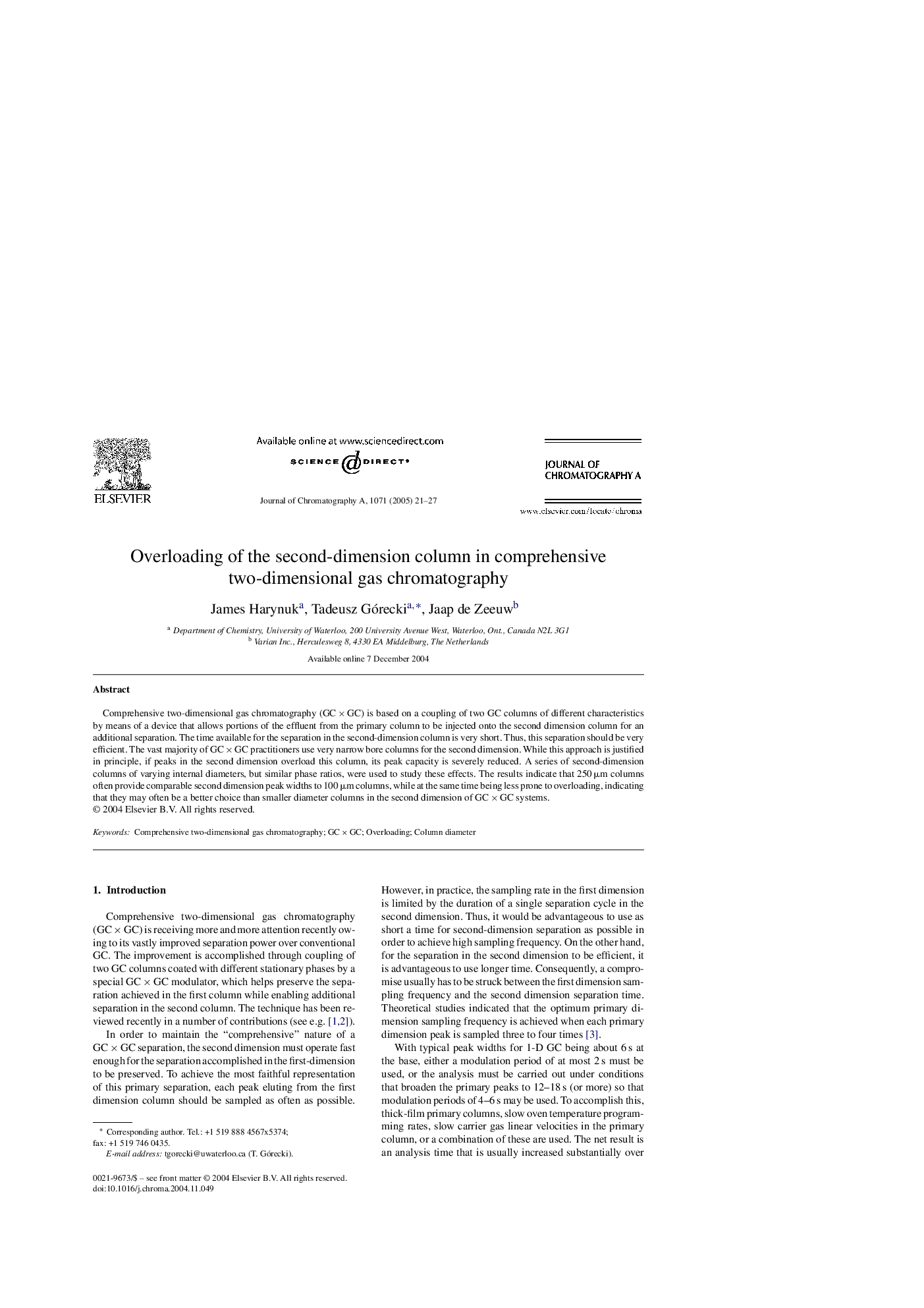| Article ID | Journal | Published Year | Pages | File Type |
|---|---|---|---|---|
| 9749173 | Journal of Chromatography A | 2005 | 7 Pages |
Abstract
Comprehensive two-dimensional gas chromatography (GC Ã GC) is based on a coupling of two GC columns of different characteristics by means of a device that allows portions of the effluent from the primary column to be injected onto the second dimension column for an additional separation. The time available for the separation in the second-dimension column is very short. Thus, this separation should be very efficient. The vast majority of GC Ã GC practitioners use very narrow bore columns for the second dimension. While this approach is justified in principle, if peaks in the second dimension overload this column, its peak capacity is severely reduced. A series of second-dimension columns of varying internal diameters, but similar phase ratios, were used to study these effects. The results indicate that 250 μm columns often provide comparable second dimension peak widths to 100 μm columns, while at the same time being less prone to overloading, indicating that they may often be a better choice than smaller diameter columns in the second dimension of GC Ã GC systems.
Related Topics
Physical Sciences and Engineering
Chemistry
Analytical Chemistry
Authors
James Harynuk, Tadeusz Górecki, Jaap de Zeeuw,
